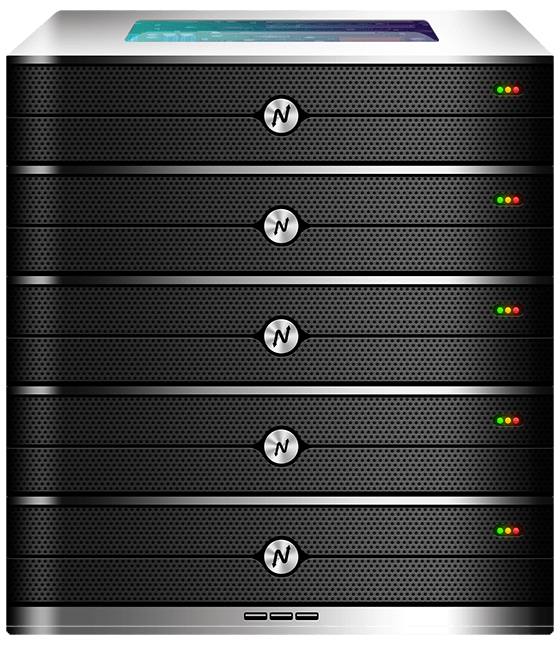Managing users on a Linux server is a critical task for maintaining security, assigning permissions, and ensuring smooth operations. Whether you’re running a website, application, or database, knowing how to find users in Linux is essential for server administration. XenaxCloud, with its India-based data center, offers robust hosting solutions like Shared Hosting, VPS, Indian RDP, Dedicated Servers, Domains, and Reseller Hosting. This comprehensive guide covers how to check users list in Linux, related commands like Linux list users, and why XenaxCloud is the best choice for Indian businesses.
Why Is User Management Important in Linux?
Linux is a powerful, open-source operating system widely used for web hosting due to its stability, security, and flexibility. Managing users on a Linux server allows administrators to:
- Control Access: Ensure only authorized users access the server.
- Assign Permissions: Grant specific roles to users, such as read-only or admin access.
- Enhance Security: Monitor user activity to prevent unauthorized access.
- Optimize Resources: Manage system resources allocated to users.
With XenaxCloud’s hosting solutions, particularly VPS and Dedicated Servers, you get root access to execute commands like Linux list users, making user management seamless. The India-based data center ensures low-latency access for Indian users, which is critical for efficient server administration.
Understanding Linux User Management
Linux stores user information in system files like /etc/passwd and /etc/group. Knowing how to find users in Linux involves using commands to access these files or query user data. Common scenarios include:
- Checking all registered users on the server.
- Identifying currently logged-in users.
- Managing user permissions for web applications or databases.
XenaxCloud’s Linux-based hosting, available with VPS and Dedicated Servers, supports distributions like Ubuntu, CentOS, and Debian, which are ideal for user management tasks.
How to Find Users in Linux: Step-by-Step Guide
Below is a detailed guide on how to check users list in Linux using various commands. These steps work seamlessly on XenaxCloud’s VPS or Dedicated Servers, which offer root access and **Indian RDP](https://xenaxcloud.com/indian-rdp/) for secure remote management.
Step 1: Use the cat /etc/passwd Command
The /etc/passwd file contains details of all users on the system.
- Open a terminal or connect via Indian RDP.
- Run:
cat /etc/passwd - Output: Displays a list of users with details like username, user ID, group ID, home directory, and shell.
- Example:
user1:x:1001:1001::/home/user1:/bin/bash
- Example:
This command is useful for a quick overview but includes system users (e.g., root, daemon).
Step 2: Use getent passwd for a Cleaner List
The getent command queries the system’s user database, including users from external sources like LDAP.
- Run:
getent passwd - Output: Similar to
cat /etc/passwdbut includes network-based users if configured. - Example:
user2:x:1002:1002::/home/user2:/bin/bash
This is ideal for XenaxCloud’s VPS users managing complex setups.
Step 3: List Usernames Only with cut
To extract just usernames, use the cut command:
- Run:
cut -d: -f1 /etc/passwd - Output: A clean list of usernames (e.g.,
user1,user2some text,root`). - This is helpful for auditing user accounts on Dedicated Servers.
Step 4: Check Currently Logged-In Users with who
To see active users:
- Run:
who - Output: Lists users currently logged into the system, including session details.
- Example:
user1 pts/0 2025-07-21 10:00 (192.168.1.1)
- Example:
This is useful for monitoring server activity via Indian RDP.
Step 5: Use w for Detailed Session Information
For more details on logged-in users:
- Run:
w - Output: Shows user sessions, login time, and resource usage.
Step 6: List Group Members with getent group
To check users in a specific group:
- Run:
getent group groupname - Output: Lists users belonging to the specified group (e.g.,
sudo).
These commands are efficient on XenaxCloud’s India-based servers, ensuring fast execution and minimal latency.
Advanced User Management Tips
- Filter Human Users: Use
awkto list users with IDs above 1000 (excluding system users):awk -F: '$3 >= 1000 {print $1}' /etc/passwd - Check User Activity: Use
lastto view user login history:last - Manage Permissions: Update
/etc/groupor useusermodto adjust user access. - Secure Access: Use XenaxCloud’s Indian RDP for secure remote user management.
Why Choose XenaxCloud for Linux Hosting?
XenaxCloud is the ideal hosting provider for Indian businesses due to its India-based data center and comprehensive hosting solutions. Here’s how each service supports Linux user management:
Shared Hosting
Shared Hosting is perfect for small websites and blogs:
- 99.5% Uptime: Ensures your site is always accessible.
- cPanel Access: Simplifies user management for non-technical users.
- Free SSL Certificates: Enhances security for user data.
VPS Hosting
VPS is ideal for growing businesses:
- Root Access: Full control to run commands like Linux list users.
- Scalable Resources: Adjust CPU, RAM, and storage as needed.
- India-Based Servers: Low latency for Indian users.
Indian RDP
Indian RDP offers secure remote server management:
- Seamless Connectivity: Access servers from anywhere in India.
- Strong Security: Protects user data and configurations.
- Affordable Plans: Budget-friendly for developers.
Dedicated Servers
Dedicated Servers provide exclusive resources:
- Full Resource Allocation: Handles high-traffic websites and complex user management.
- Custom Configurations: Optimized for Linux distributions like Ubuntu or CentOS.
- India-Based Access: Fast performance for local users.
Domain Registration
Domains enhance your online presence:
- Competitive Pricing: Affordable .in and .com domains.
- Easy DNS Management: Simplifies server setup.
- Local Appeal: .in domains boost SEO for Indian audiences.
Reseller Hosting
Reseller Hosting lets you start your own hosting business:
- White-Label Branding: Offer services under your brand.
- Scalable Resources: Support multiple clients and users.
- 24/7 Support: XenaxCloud handles technical issues.
Benefits of India-Based Hosting with XenaxCloud
XenaxCloud’s India-based data center offers unmatched advantages:
- Low Latency: Fast load times and command execution for Indian users, improving UX and SEO.
- Data Compliance: Adheres to India’s data protection laws, critical for businesses.
- Local Support: 24/7 assistance in Hindi, English, and other Indian languages.
- Scalability: Solutions for startups, SMEs, and enterprises.
These benefits make XenaxCloud the top choice for managing Linux servers efficiently.
Additional Tips for Linux User Management
- Regular Audits: Periodically run Linux list users commands to review accounts.
- Secure User Accounts: Use strong passwords and disable unused accounts with
passwd -l username. - Monitor Logs: Check
/var/log/auth.logfor unauthorized access attempts. - Automate Tasks: Use scripts to automate user management tasks on VPS.
- Backup Data: XenaxCloud’s backup solutions protect user data and configurations.
Common User Management Scenarios
- Adding Users: Use
adduser usernameto create new accounts. - Removing Users: Run
deluser usernameto delete accounts safely. - Changing Permissions: Use
chmodandchownto adjust file access for users. - Monitoring Usage: Tools like
toporhtopshow user resource consumption.
These tasks are streamlined with XenaxCloud’s Indian RDP and VPS, ensuring secure and efficient administration.

FAQs
- What does “how to find users in Linux” mean?
It refers to using commands likecat /etc/passwdorgetent passwdto list users on a Linux server, essential for security and administration. XenaxCloud’s VPS supports these tasks. - How to check users list in Linux on XenaxCloud?
Use commands likecut -d: -f1 /etc/passwdorwhovia Indian RDP or terminal on XenaxCloud’s VPS for a quick user list. - Why is XenaxCloud ideal for Linux user management?
XenaxCloud’s India-based data center ensures low latency, data compliance, and 24/7 local support, with VPS offering root access for full control. - Can I manage multiple websites with XenaxCloud?
Yes, VPS and Reseller Hosting provide scalable resources for hosting and managing multiple websites and users. - How does Indian RDP help with Linux user management?
Indian RDP offers secure remote access to run Linux list users commands and manage servers from anywhere in India.
Conclusion
Mastering how to find users in Linux is crucial for secure and efficient server management. With commands like cat /etc/passwd, getent passwd, and who, you can easily monitor and manage users on your Linux server. XenaxCloud enhances this process with its India-based data center, offering low-latency, secure, and compliant hosting solutions like Shared Hosting, VPS, Indian RDP, Dedicated Servers, Domains, and Reseller Hosting. Whether you’re a startup or an enterprise, XenaxCloud’s 24/7 local support and scalable resources empower your business. Explore XenaxCloud’s offerings at XenaxCloud.com and take control of your Linux server today!






